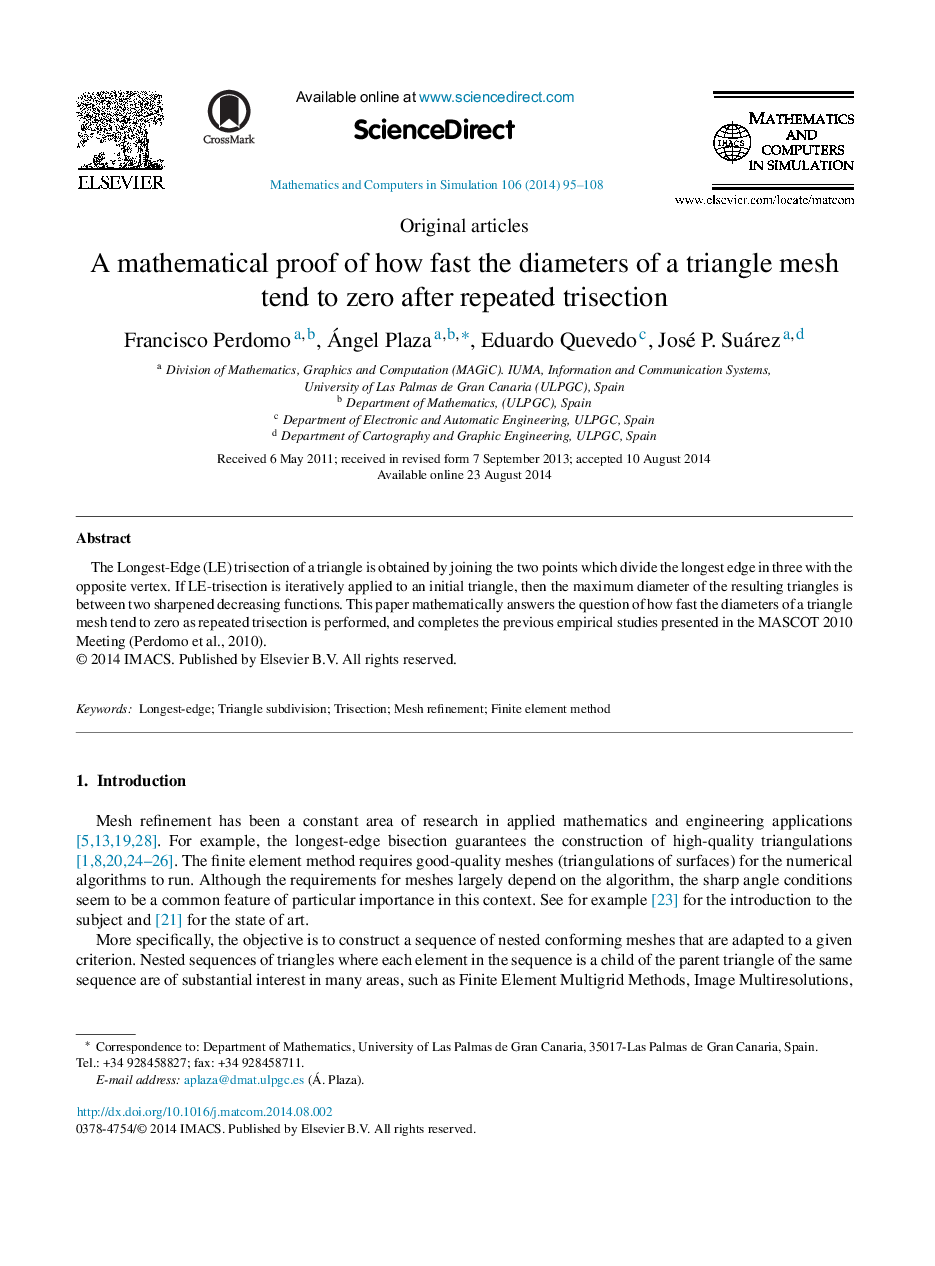| Article ID | Journal | Published Year | Pages | File Type |
|---|---|---|---|---|
| 1139573 | Mathematics and Computers in Simulation | 2014 | 14 Pages |
Abstract
The Longest-Edge (LE) trisection of a triangle is obtained by joining the two points which divide the longest edge in three with the opposite vertex. If LE-trisection is iteratively applied to an initial triangle, then the maximum diameter of the resulting triangles is between two sharpened decreasing functions. This paper mathematically answers the question of how fast the diameters of a triangle mesh tend to zero as repeated trisection is performed, and completes the previous empirical studies presented in the MASCOT 2010 Meeting (Perdomo et al., 2010).
Keywords
Related Topics
Physical Sciences and Engineering
Engineering
Control and Systems Engineering
Authors
Francisco Perdomo, Ángel Plaza, Eduardo Quevedo, José P. Suárez,
